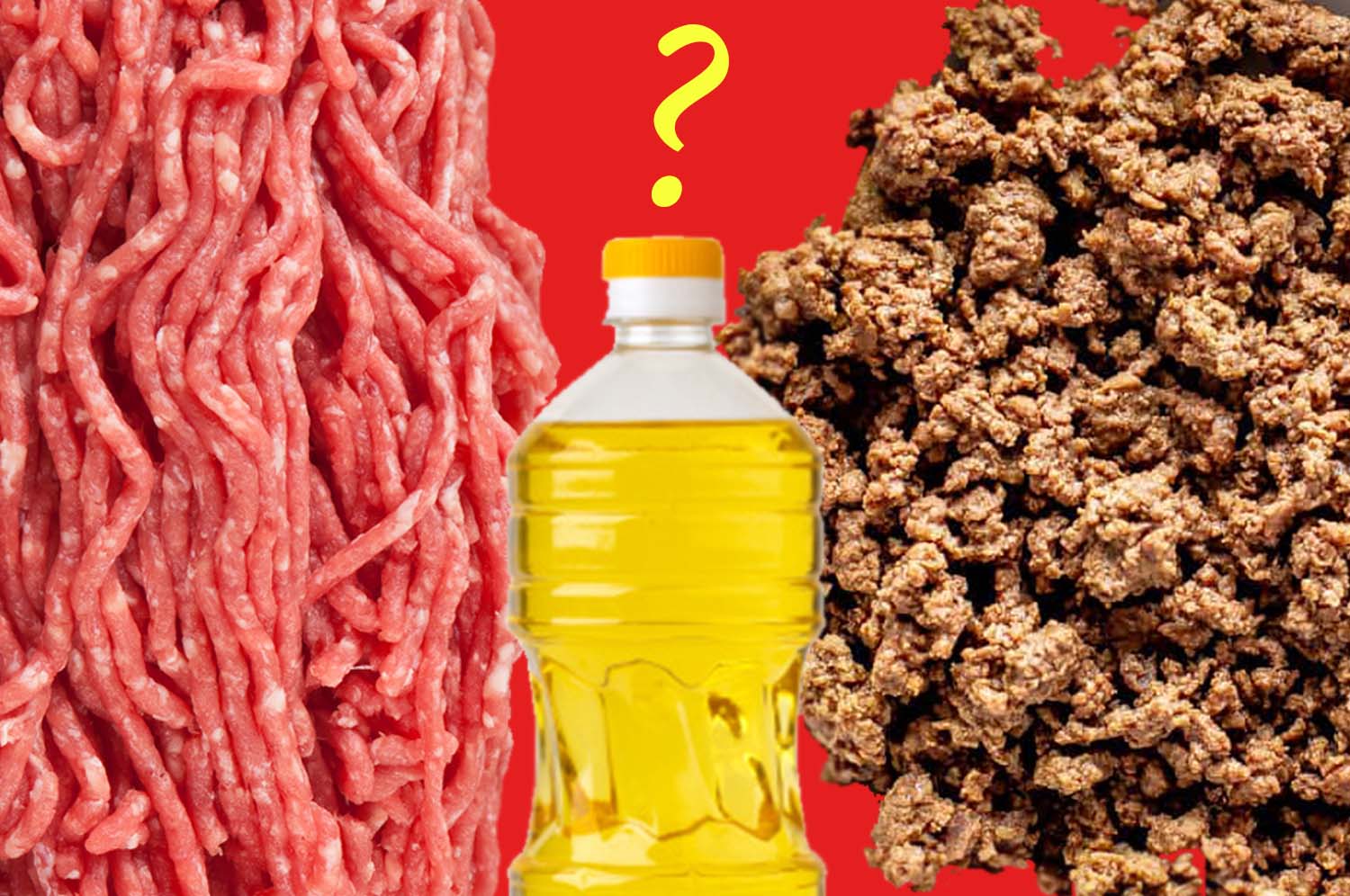Recipes come in all shapes and sizes, and ground beef is no exception to the rule.
Everyone seems to have their own little maneuver to make theirs “simply the best.”
Never mind that, what if you wanted to cut down on the fat you’re consuming, and decided to go on a healthier diet?
Needless to say, spraying oil left and right. After this article, you can put the oil aside for good.
It’s crucial to remember what the oil is used for, to begin with, for us to find a good substitute.
We’re also going to fill you in on some mistakes people don’t realize they make while cooking beef.
Before we dive into this article, I’m going to give you the quick solution I use at home for cooking extra-lean ground beef without oil.
Key Takeaways:
Use a non-stick pan and pour small amounts of water(1/4 cup for every pound of ground beef used) into your pan. Also, Stir and frequently toss to help lessen the sticking.
The Effectiveness Of Oil
It’s not hard to understand why – the slippery texture of the oil allows the ground beef not to stick to the pan while cooking it.
Using oil will also give your meat a better taste.
This, however, will depend on which kind you use. Using unrefined oil for cooking at high temperatures will not do a thing besides making the food taste worse.
The difference in this process is that refined oils can withstand higher temperatures, which are usually used while cooking meat. Speaking of high temps, check out this helpful chart I created that shows all oil smoke points.
To sum it up, for taste, texture, and for the meat not to stick to the pan.
In a recent article, I discuss significant differences between plant and animal-based oils. With helpful chart included.
What could you start using instead of oil?
This is tricky to answer without getting into why you do not want to use oil anymore.
You can find a solution that replaces oil with another option; you can also find another solution that does not need oil or other foods. So let’s start.
1. Supposing you don’t mind switching oil with another food and are not necessarily on a diet.
In this case, you can replace the oil with butter. This change will also not allow the meat to stick to the pan.
It would, realistically though, change the flavor – somewhat. If you’re okay with this alteration, this could be a solution for your need to get rid of oil. Using butter will also not let you down in terms of giving it the right texture.
Okay, if you thought you just went from bad to worse with this change, you might be doing this in order to acquire a healthier diet. If so, keep reading to the next point; if not, you can skip it.
2. Assuming the first solution made you angry at the thought you might ruin your new healthy diet, this solution is for you.
You could substitute oil with a non-stick pan and a bit of water. It’s that simple.
However, using this solution will obviously not give you any extra flavors, or offer you a particular texture you can be proud of.
This solution, though, is probably the healthiest option of the two.
You have to choose your battles, and might have to let go of the additional features oil or butter gives you for a healthier diet.
If you’re ready to do that, then more power to you! Just keep an eye on the meat while it’s cooking to make sure it doesn’t burn.
This will cause lingering smells in your house. In a recent article, I discuss ways to prevent unwanted cooking smells from traveling around your home.
Complete set of instructions for cooking with a non-stick pan and water
- Heat the pan for a little bit, and don’t put the oil (otherwise, what was the main point of all of this?). If you choose to use butter instead, you can do so during this step. If you opted not to use the butter either, just stare proudly into the abyss of the heating pan.
- You can now add the beef you want to cook. Cutting it into multiple smaller pieces will help you cook every little side and bit of your meal. So cutting them into smaller pieces is recommended for this reason. Not too small just yet. Leave it for about 5 minutes.
- At this point, you can start to add a bit of water if you see the beef beginning to stick. Warning mess alert: adding water to the hot pan will cause the oil from the meat to pop and splash out. Check out this recent article I wrote on how to reduce the mess when cooking beef.
- Now, continue mashing beef into even smaller pieces, for the same reason mentioned above. At this stage, you want to add whatever spices or toppings you want to go with your meal.
- Let it cook, and stir it every minute or so.
- Once no pink is left, you’ll realize you have finished browning the beef.
Mistakes you might be making
- We’ll start with one we gave a hint at during the course of this article. Using the wrong oil, as in using unrefined oil for high-temperature cooking. Since you’re on this article, this should not be a problem anymore.
If you still decide to use oil after reading this, make sure you’re using refined oil for ground beef cooking. High-temperature cooking can lead to more smoke in the kitchen. In a recent article, I talk about the benefits of using the right rangehood. - Letting the beef stay on for way too long. Overdoing it on this end will dry it all up and turn it rocky and inedible. This point will especially matter if you’re deciding not to use oil anymore. So make sure you keep an eye on it while it’s cooking – just in case.
Conclusion
You basically have all the tools to cook your ground beef without any oil. Which solution you will opt to take really depends on your personal liking and diet.
However, in this article, you have learned several ways to do this process the right way.
We have also informed you of a few mistakes that you could have been making, which could be worsening the flavor of your meals, and you had not even realized it.








